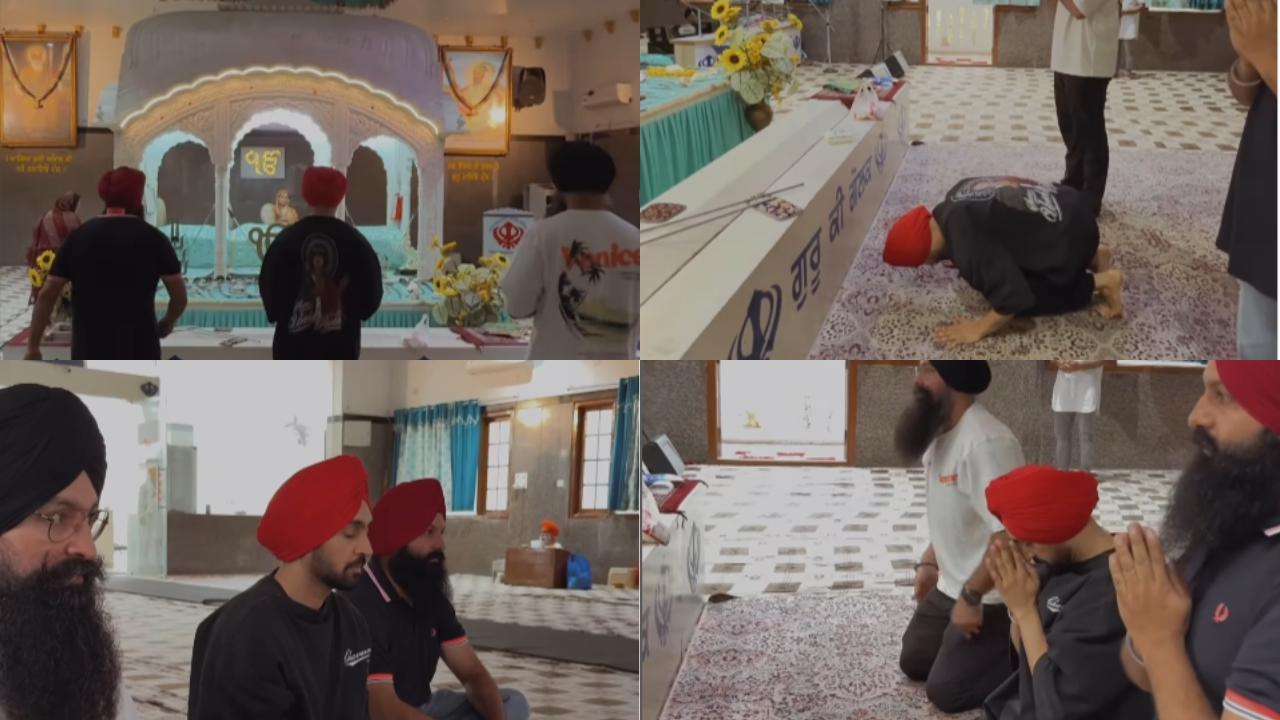
In the bustling world of dance, few artists can command attention with the same fervor as Aditi Mangaldas. Petite in stature and seemingly overshadowed by her taller counterparts, Aditi transforms the moment she steps on stage. Her impeccable grace, mesmerizing beauty, and fiery passion ensure that she becomes the undeniable focal point, no matter who dances beside her. As a revered doyen of Kathak, Aditi Mangaldas masterfully blends traditional culture and modernism, creating a visual and emotional tapestry that leaves audiences spellbound.
Aditi’s versatility is evident in her dual role as both a custodian of traditional mythology and a commentator on pressing social issues through her contemporary form. Set to perform in Bengaluru with her choreography “Immersed” as part of SwarTaal, Jagriti’s annual celebration of Indian classical music and dance, Aditi’s work echoes the festival’s mission of honoring classical performance arts, music, and theatre. Alongside fellow artistes Kapila Venu and TM Krishna, she aims to enthrall the Bengaluru audience.
“Immersed,” Aditi explains over a phone interview from her Delhi home, is an exploration of Krishna. “He is one of the most beloved and intriguing deities in the Hindu pantheon,” she elaborates. “Krishna is omnipresent in literature, architecture, dance, music, poetry, and sculpture. Can Krishna be transformed into a belief or concept? Can he be static or confined to a specific gender, class, or faith? To me, Krishna symbolizes the ever-flowing river, the unquenchable flame, life itself.”
Aditi’s journey into the realm of Kathak began at an early age. “I cannot take full credit for the decision to pursue dance,” she muses. “My parents noticed that I would express my daily experiences by jumping on tables and dancing. My mother, who had yearned to dance but was denied the opportunity, along with my father, decided to enroll me in music, dance, and visual arts. I was only four years old then,” Aditi recalls. This early start led her to the legendary Kathak exponent Kumudini Lakhia, who became her guru and sparked her lifelong passion for the dance form.
Kathak’s history is as dynamic as Aditi’s career. “Kathak has navigated temples, Mughal courts, kothas (courtesan houses), and proscenium stages. Today, it stands as a formidable style through which contemporary works can flourish,” Aditi says. “When dancer Akram Khan uses Kathak as a foundation, it showcases the dance form’s ability to transcend classical boundaries and embrace innovative explorations. Kathak has countless windows to open, which excites and challenges me as an artist.”
Aditi’s rigorous training from age five to 22 under Kumudini Lakhia and subsequently from 22 to 26 under Birju Maharaj were transformative years. “Those years were magical, and I still refer to them in the present tense because their work continues to inspire. While Kumudiniji approached Kathak ‘without Krishna,’ Maharajji embodied the philosophy that ‘Kathak is Krishna.’ Their differing viewpoints demonstrated that diversity in thought could coexist harmoniously, celebrating differences as nature does.”
Equally at home in traditional and contemporary dance, Aditi finds both invigorating. “I am more comfortable with classical forms, yet classical dance rules are not immutable.
. Like a constantly flowing river, classical dance rejuvenates itself. By infusing Kathak with contemporary insights, incorporating sounds and steps from around the world, we create a new form that remains rooted in tradition. This fusion is both challenging and exhilarating.”
When discussing her creative process, the esteemed recipient of the Gujarat Sangeet Natak Academy and the National Sangeet Natak Akademi awards, shares, “My work often begins with a text, a piece of poetry, or even a visual that catches my eye. For instance, once stuck in a traffic jam, I witnessed a tree shedding its yellow flowers onto my car, sparking my imagination. Such moments inspire both my classical and contemporary works, which I allow to brew in my mind before shaping them into dance pieces.”
Turning concepts into dances often requires collaboration. “For ‘Mehek,’ a love story between an older woman and a younger man, I collaborated with British dancer Aakash Odedra. The piece earned me a nomination for outstanding performance (classical) by the National Dance Critics Circle Award in the UK in 2017,” Aditi notes.
Aditi doesn’t shy away from using her art to address social issues, particularly patriarchy. “Patriarchy is sometimes ingrained in dance forms themselves. We have sequences called ‘ched-chad,’ which translates to ‘no means yes.’ For years, I unwittingly perpetuated this message through dance. Realizing its implications, I now consciously ensure that such patriarchal notions do not infiltrate my classical works,” she asserts.
Aditi’s contemporary pieces, such as “Forbidden” and “Within,” delve into themes like female sexual desire and societal brutality. “Within” was a response to the Nirbhaya rape, exploring humanity’s darker facets. “I couldn’t depict beautiful male-female relationships when something so horrific was happening. We stripped gender from the dance, making it a reflection on humanity and inherent brutality. Acceptance and understanding of our darker sides can lead to true humanity.”
Her poignant work “Weeping Red,” choreographed for a solidarity event, is based on a poem by Sudeep Sen and the late Palestinian poet Refaat Alareer. It laments the tragedies of children in conflict zones, regardless of their backgrounds.
Aditi insists she is not an activist but hopes her dance can provoke thought and inspire change. “I don’t carry a flag or claim to have answers. Dance is my medium, and I hope it can bring viewers closer to their humanity and prompt self-reflection, potentially leading to transformation.”
“Immersed” will be showcased in Bengaluru on September 28 at 7:30 pm at Jagriti Theatre. The performance is open to audiences aged eight and above. Tickets are available on BookMyShow.










